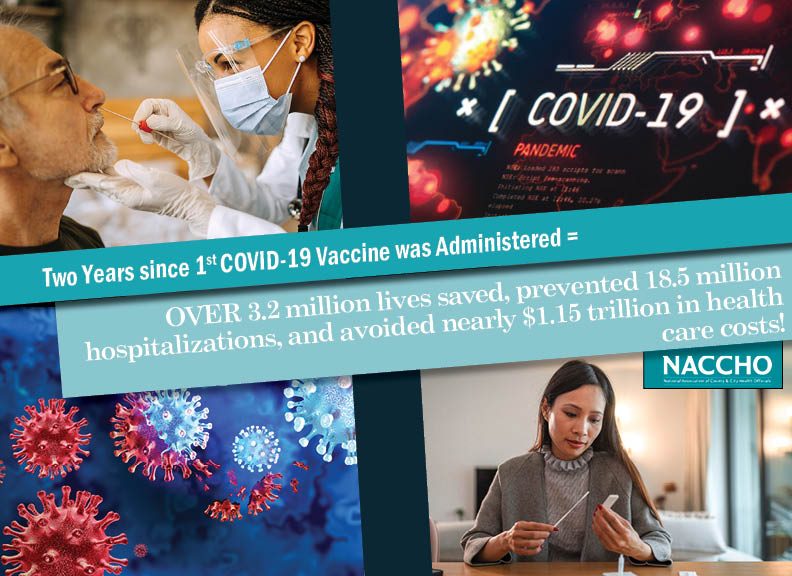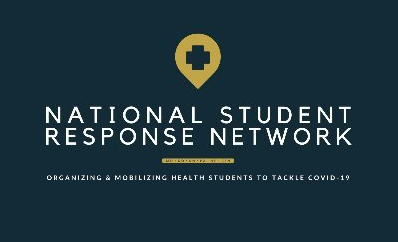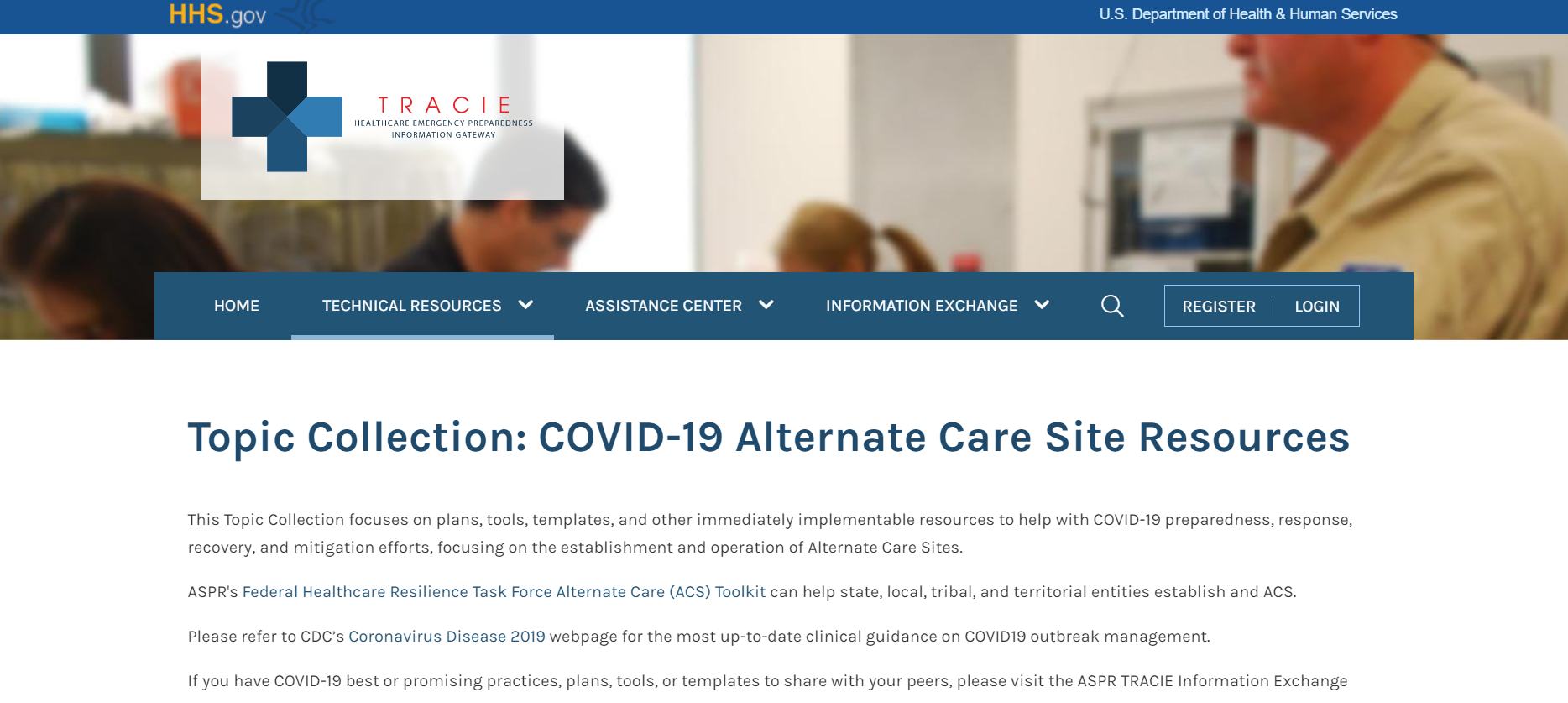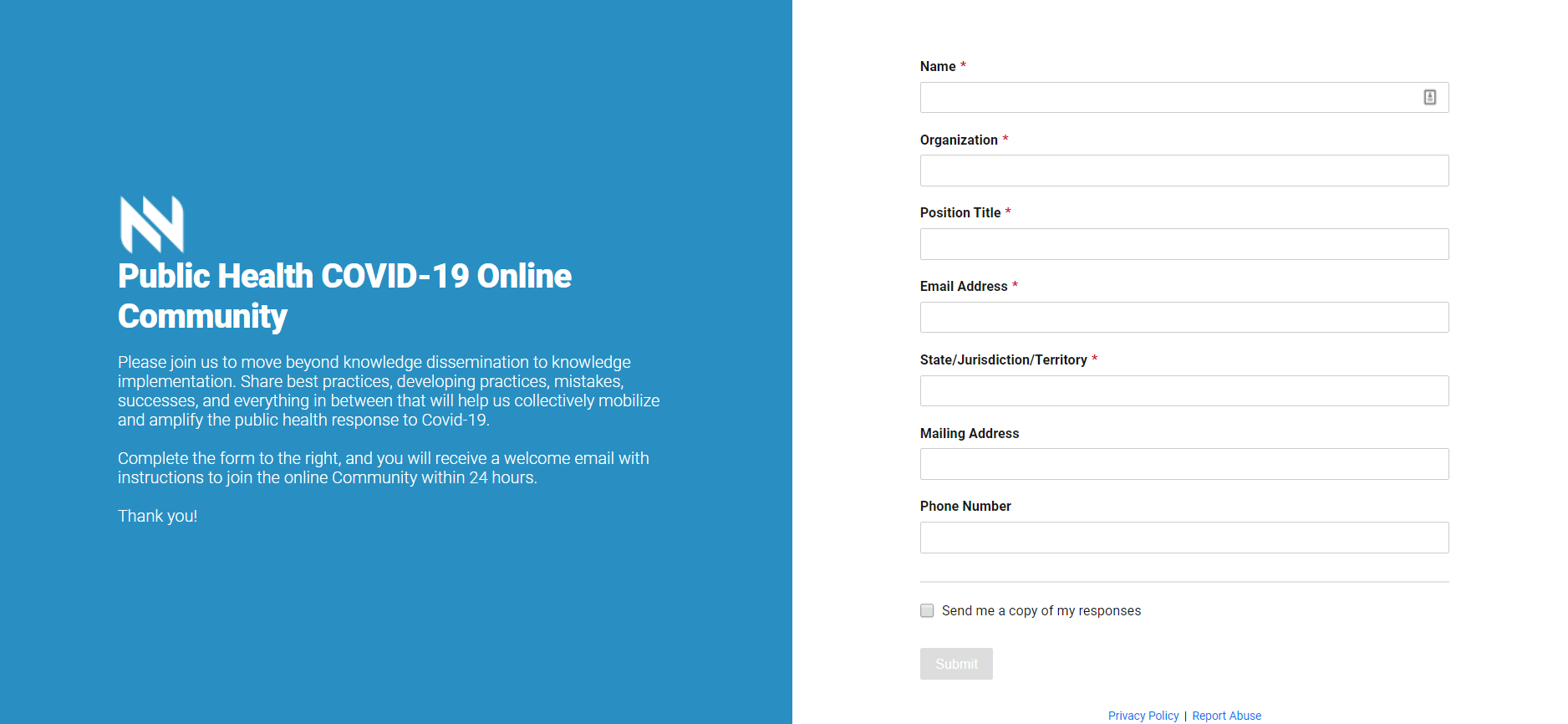Popular Categories
Planning for Healthy, Resilient, and Sustainable Communities After Disasters
By Megan Reeve, Program Officer; Autumn Downey, Program Officer; and Jack Herrmann, Senior Program Officer for the National Academy of...
Aug 21, 2015 | Mary Hodges
How Local Health Departments Can Use “Flu Near You”
This year’s flu season might be winding down, but the 2015-2016 flu season is right around the corner. Local health departments can...
May 06, 2015 | Admin
FDA Launches Drug Shortages App
“FDA Drug Shortages” is a new app by the U.S. Food and Drug Administration (FDA) that identifies current drug shortages,...
Apr 10, 2015 | Katie Regan
Local Health Department Considers the 49th Hour through Long-Term Mass Prophylaxis...
Anthrax response plans, exercises, and assessments over the past decade have focused almost exclusively on the first 48 hours of the...
Apr 09, 2015 | Raymond Puerini
NCIPH Launches Real-Time Assessment Tool to Help Local Health Departments Address...
The North Carolina Institute for Public Health (NCIPH) has launched a real-time assessment tool to provide local health departments...
Mar 31, 2015 | Rachel Schulman
NACCHO Funds 43 Innovative Community Projects through MRC Challenge Award
by Tahlia Gousse, Senior Program Analyst, Public Health Preparedness and Katie Roulston, Program Associate, Public Health Preparedness...
Mar 18, 2015 | Tahlia Gousse
White House Report Identifies Climate Change as Major National Security Threat
The White House National Security Strategy for 2015, released in mid-February, identifies climate change as a significant risk to...
Mar 03, 2015 | Katie Regan
ASPR Releases New National Health Security Strategy
The National Health Security Strategy and Implementation Plan (NHSS/IP) 2015-2018 was released on Friday, February 20, 2015 by the...
Feb 23, 2015 | Frances Bevington
New Evidence-Based Planning Guidance for Patient Decontamination Released
Every day large quantities of hazardous materials are made, transported, stored, and used in communities throughout the United States....
Dec 19, 2014 | Justin Snair
Planning for Healthy, Resilient, and Sustainable Communities After DisastersBy Megan Reeve, Program Officer; Autumn Downey, Program Officer; and Jack Herrmann, Senior Program Officer for the National Academy of Sciences, Institute of Medicine, Board on Health Sciences Policy Disasters often impact fundamental elements of a community—physical infrastructure, health, and social services, social connectedness—that all affect the health of its residents. Accordingly, the... Aug 21, 2015 | Mary Hodges |
How Local Health Departments Can Use “Flu Near You”This year’s flu season might be winding down, but the 2015-2016 flu season is right around the corner. Local health departments can begin to prepare for the next flu season by using Flu Near You, an online health reporting system. Through Flu Near You, thousands of volunteers answer a brief, weekly digital questionnaire about their […] May 06, 2015 | Admin |
FDA Launches Drug Shortages App“FDA Drug Shortages” is a new app by the U.S. Food and Drug Administration (FDA) that identifies current drug shortages, resolved shortages, and discontinuations of drug products. This is the agency’s first app specifically designed to speed public access to information about shortages. Drugs in short supply can delay or deny needed care for patients, […] Apr 10, 2015 | Katie Regan |
Local Health Department Considers the 49th Hour through Long-Term Mass Prophylaxis PlanningAnthrax response plans, exercises, and assessments over the past decade have focused almost exclusively on the first 48 hours of the public health response following a jurisdiction-wide exposure and provision of an initial 10-day supply of antibiotics from the Strategic National Stockpile (SNS). But mass dispensing of the subsequent 50-day course of antibiotics and administration […] Apr 09, 2015 | Raymond Puerini |
NCIPH Launches Real-Time Assessment Tool to Help Local Health Departments Address CDC Public Health Preparedness CapabilitiesThe North Carolina Institute for Public Health (NCIPH) has launched a real-time assessment tool to provide local health departments with a rapid means to assess their preparedness capabilities and readily access top-tier resources. In a recent pilot, local health departments from 15 states were able to complete their assessments in 10 minutes or less, receiving […] Mar 31, 2015 | Rachel Schulman |
NACCHO Funds 43 Innovative Community Projects through MRC Challenge Awardby Tahlia Gousse, Senior Program Analyst, Public Health Preparedness and Katie Roulston, Program Associate, Public Health Preparedness NACCHO, in partnership with the Division of Civilian Volunteer Medical Reserve Corps (DCVMRC), has selected 43 Medical Reserve Corps (MRC) units to receive 2014-2015 NACCHO MRC Challenge Awards. More than 175 MRC units across the country applied for […] Mar 18, 2015 | Tahlia Gousse |
White House Report Identifies Climate Change as Major National Security ThreatThe White House National Security Strategy for 2015, released in mid-February, identifies climate change as a significant risk to Americans both at home and abroad. Climate change is listed alongside threats such as terrorism and a nuclear Iran. “Climate change is an urgent and growing threat to our national security, contributing to increased natural disasters, […] Mar 03, 2015 | Katie Regan |
ASPR Releases New National Health Security StrategyThe National Health Security Strategy and Implementation Plan (NHSS/IP) 2015-2018 was released on Friday, February 20, 2015 by the Office of the Assistant Secretary for Preparedness and Response (ASPR). Hundreds of organizations and agencies participated in crafting the strategy to develop recommended actions that are realistic and achievable. The latest NHSS is streamlined from the first... Feb 23, 2015 | Frances Bevington |
New Evidence-Based Planning Guidance for Patient Decontamination ReleasedEvery day large quantities of hazardous materials are made, transported, stored, and used in communities throughout the United States. With nearly 25 million people living near chemical facilities in the nation, many could be exposed to chemicals following a catastrophic incident. To protect health and save lives in such catastrophic incidents, first responders, medical providers, […] Dec 19, 2014 | Justin Snair |
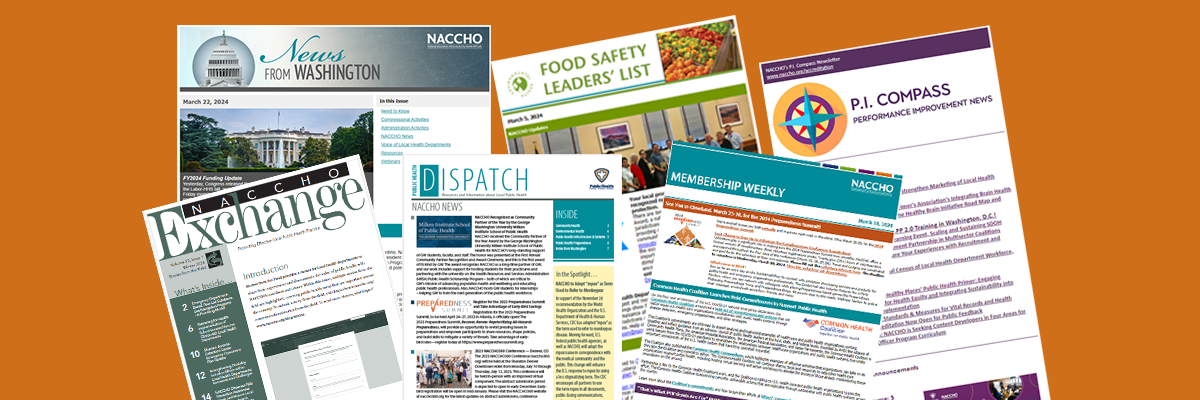
Subscribe Today
Sign Up for the E-mail Digests
Create an account or login to MyNACCHO and go to "My Subscriptions."
SUBSCRIBE NOW